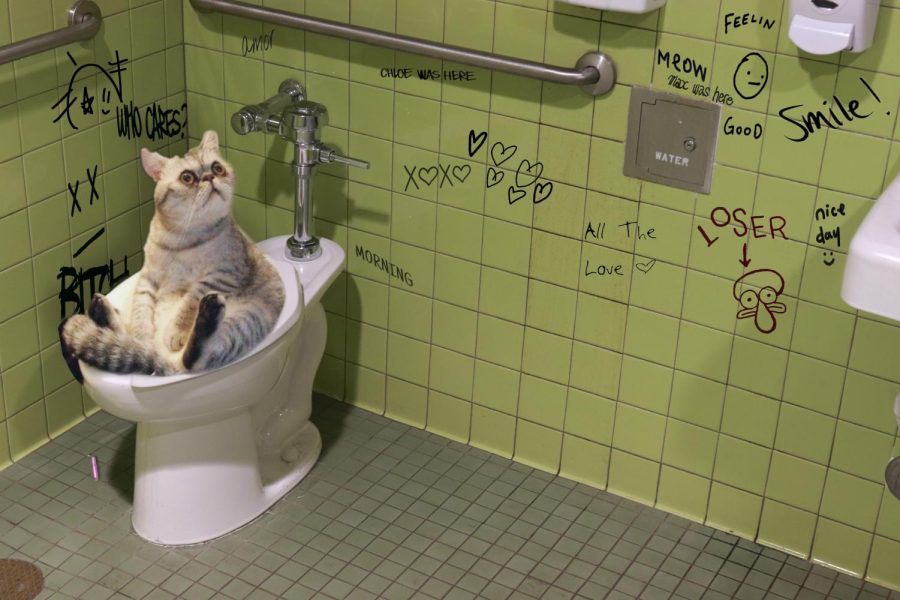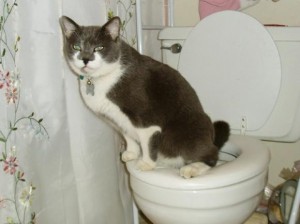My Importance of Proper Disposal of Animal Waste
My Importance of Proper Disposal of Animal Waste
Blog Article
Have you been searching for facts involving Don't Flush Your Pets Poo Down The Loo, Vet Warns?

When it comes to disposing of waste, specifically animal waste, lots of people typically consider the hassle-free alternative of flushing it down the toilet. Nonetheless, this apparently easy solution can have significant consequences for the environment and public health. In this short article, we'll check out why flushing animal waste down the toilet is a bad idea and provide alternative techniques for appropriate disposal.
Introduction
Correct garbage disposal is crucial for preserving environmental sustainability and public health. While it may seem safe to flush animal waste down the commode, it can cause various issues, both for the setting and human wellness.
Threats of flushing pet waste
Environmental effect
Purging animal waste introduces unsafe bacteria and pathogens into waterways, which can negatively affect water environments. These microorganisms can contaminate water sources and damage marine life, interfering with delicate communities.
Public health concerns
Pet waste contains unsafe germs such as E. coli and Salmonella, which can posture major health and wellness dangers to human beings. Purging pet waste down the commode can contaminate water supplies, resulting in the spread of illness and infections.
Alternatives to flushing
As opposed to purging animal waste down the bathroom, there are several alternative disposal approaches that are extra eco-friendly and sanitary.
Composting
Composting animal waste is an eco-friendly way to throw away it. By composting, organic matter is broken down right into nutrient-rich soil, which can be utilized to fertilize yards and plants.
Garbage dump disposal
Dealing with pet waste in a landfill is one more choice. While not as eco-friendly as composting, it is a safer alternative to flushing, as it protects against the contamination of water sources.
Family pet waste disposal systems
There are specific pet dog waste disposal systems readily available that safely and hygienically throw away pet waste. These systems typically make use of enzymes to break down waste and get rid of smells.
Steps to appropriate pet garbage disposal
To make certain proper disposal of animal waste, follow these actions:
Scooping and bagging waste
Frequently scoop and bag animal waste utilizing eco-friendly bags. This protects against waste from contaminating the environment.
Using designated waste bins
Dispose of bagged pet waste in marked waste containers, such as compost containers or land fill containers. Prevent flushing it down the bathroom whatsoever costs.
Cleaning litter boxes and pet dog locations frequently
Frequently clean can and pet dog get more info locations to prevent the buildup of waste and microorganisms. Use pet-safe cleaning items to keep health.
Benefits of appropriate disposal techniques
Embracing correct disposal approaches for animal waste uses numerous benefits:
Reduced environmental pollution
Correct disposal approaches decrease the danger of environmental pollution, safeguarding rivers and communities from contamination
Lessened threat of water contamination.
By avoiding flushing animal waste down the bathroom, the danger of water contamination is significantly decreased, securing public health.
Boosted hygiene and health
Proper disposal techniques promote better sanitation and hygiene, creating a safer environment for both human beings and pets.
Verdict
To conclude, flushing pet waste down the bathroom is damaging to the atmosphere and public health. By adopting different disposal techniques and following correct waste administration practices, we can decrease the negative influence of animal waste and add to a cleaner, healthier earth.
What To Do With Dog Poo – The Do's And Don'ts Of Disposing Of Faeces
Dog poo bins
Some councils provide dedicated dog waste bins in popular dog-walking areas that can take dog poo that has been bagged but you can legally dispose of dog waste in any public litter bin, as long as it is securely bagged. This also applies to your wheelie bin at home.
Do not flush
Water companies do not recommend flushing dog faeces down the toilet because certain parasites can survive the water processing treatment and are potentially harmful to humans. You should also never consider flushing dog poo that has been bagged down the toilet as the bags will not break down and instead create severe blockages in the sewage system.
In the woods
The Forestry Commission promotes a ‘stick and flick’ method for dealing with waste in the woods. This means finding a stick and using it to flick any poo from off the path so that it is out of the way of other walkers. You could also bury it as long as it is not in an area where there might be livestock.
Livestock
Parasites found in dog poo can be transmitted to livestock if they inadvertently eat infected faeces that has been left on grazing land. This could result in the death of sheep or abortion in cattle so you should always make sure you pick up your dog’s waste in fields where livestock could be present.

Frequently clean can and pet dog get more info locations to prevent the buildup of waste and microorganisms. Use pet-safe cleaning items to keep health.
Benefits of appropriate disposal techniques
Embracing correct disposal approaches for animal waste uses numerous benefits:
Reduced environmental pollution
Correct disposal approaches decrease the danger of environmental pollution, safeguarding rivers and communities from contamination
Lessened threat of water contamination.
By avoiding flushing animal waste down the bathroom, the danger of water contamination is significantly decreased, securing public health.
Boosted hygiene and health
Proper disposal techniques promote better sanitation and hygiene, creating a safer environment for both human beings and pets.
Verdict
To conclude, flushing pet waste down the bathroom is damaging to the atmosphere and public health. By adopting different disposal techniques and following correct waste administration practices, we can decrease the negative influence of animal waste and add to a cleaner, healthier earth.
What To Do With Dog Poo – The Do's And Don'ts Of Disposing Of Faeces
Dog poo bins
Some councils provide dedicated dog waste bins in popular dog-walking areas that can take dog poo that has been bagged but you can legally dispose of dog waste in any public litter bin, as long as it is securely bagged. This also applies to your wheelie bin at home.
Do not flush
Water companies do not recommend flushing dog faeces down the toilet because certain parasites can survive the water processing treatment and are potentially harmful to humans. You should also never consider flushing dog poo that has been bagged down the toilet as the bags will not break down and instead create severe blockages in the sewage system.
In the woods
The Forestry Commission promotes a ‘stick and flick’ method for dealing with waste in the woods. This means finding a stick and using it to flick any poo from off the path so that it is out of the way of other walkers. You could also bury it as long as it is not in an area where there might be livestock.
Livestock
Parasites found in dog poo can be transmitted to livestock if they inadvertently eat infected faeces that has been left on grazing land. This could result in the death of sheep or abortion in cattle so you should always make sure you pick up your dog’s waste in fields where livestock could be present.

I was introduced to that write-up about 10 Things You Should Never Flush Down The Toilet from an associate on our other website. Enjoyed our blog? Please quickly share it. Let somebody else discover it. Thanks for your time invested reading it.
Schedule Your Service Report this page